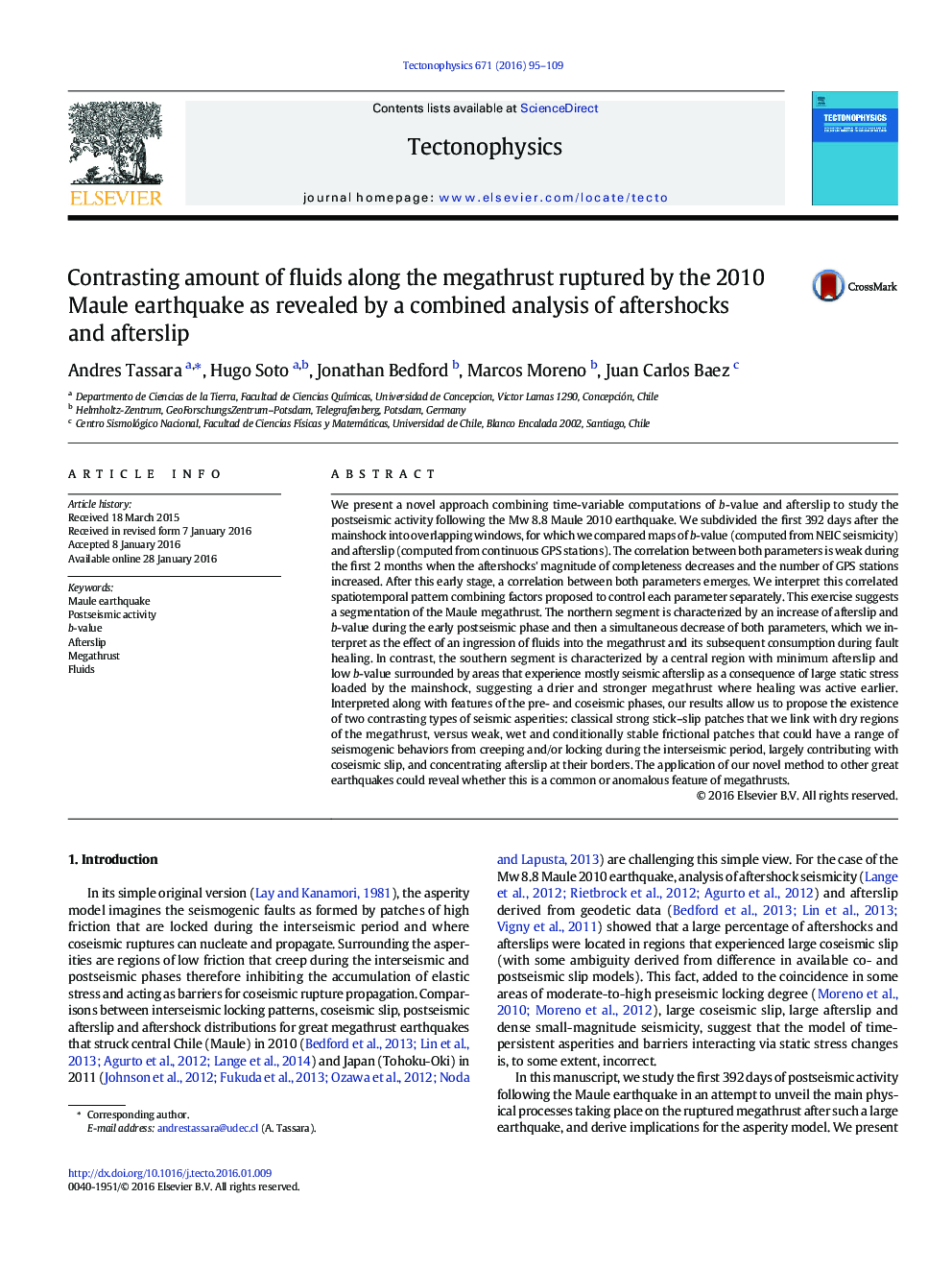| کد مقاله | کد نشریه | سال انتشار | مقاله انگلیسی | نسخه تمام متن |
|---|---|---|---|---|
| 4691327 | 1636725 | 2016 | 15 صفحه PDF | دانلود رایگان |

• Spatiotemporal analysis of b-value from aftershocks and afterslip from GPS for first 400 days after mainshock.
• Statistical correlation in space-time allow unveiling role of pore pressure and static stress change on postseismic activity.
• Comparison with pre and coseismic behavior allow recognition of along-strike chnages of fluid content and frictional regime.
• Distinguishing between weak, wet, conditionally stable asperities from classical strong, dry, stick–slip asperities.
We present a novel approach combining time-variable computations of b-value and afterslip to study the postseismic activity following the Mw 8.8 Maule 2010 earthquake. We subdivided the first 392 days after the mainshock into overlapping windows, for which we compared maps of b-value (computed from NEIC seismicity) and afterslip (computed from continuous GPS stations). The correlation between both parameters is weak during the first 2 months when the aftershocks' magnitude of completeness decreases and the number of GPS stations increased. After this early stage, a correlation between both parameters emerges. We interpret this correlated spatiotemporal pattern combining factors proposed to control each parameter separately. This exercise suggests a segmentation of the Maule megathrust. The northern segment is characterized by an increase of afterslip and b-value during the early postseismic phase and then a simultaneous decrease of both parameters, which we interpret as the effect of an ingression of fluids into the megathrust and its subsequent consumption during fault healing. In contrast, the southern segment is characterized by a central region with minimum afterslip and low b-value surrounded by areas that experience mostly seismic afterslip as a consequence of large static stress loaded by the mainshock, suggesting a drier and stronger megathrust where healing was active earlier. Interpreted along with features of the pre- and coseismic phases, our results allow us to propose the existence of two contrasting types of seismic asperities: classical strong stick–slip patches that we link with dry regions of the megathrust, versus weak, wet and conditionally stable frictional patches that could have a range of seismogenic behaviors from creeping and/or locking during the interseismic period, largely contributing with coseismic slip, and concentrating afterslip at their borders. The application of our novel method to other great earthquakes could reveal whether this is a common or anomalous feature of megathrusts.
Journal: Tectonophysics - Volume 671, 7 March 2016, Pages 95–109